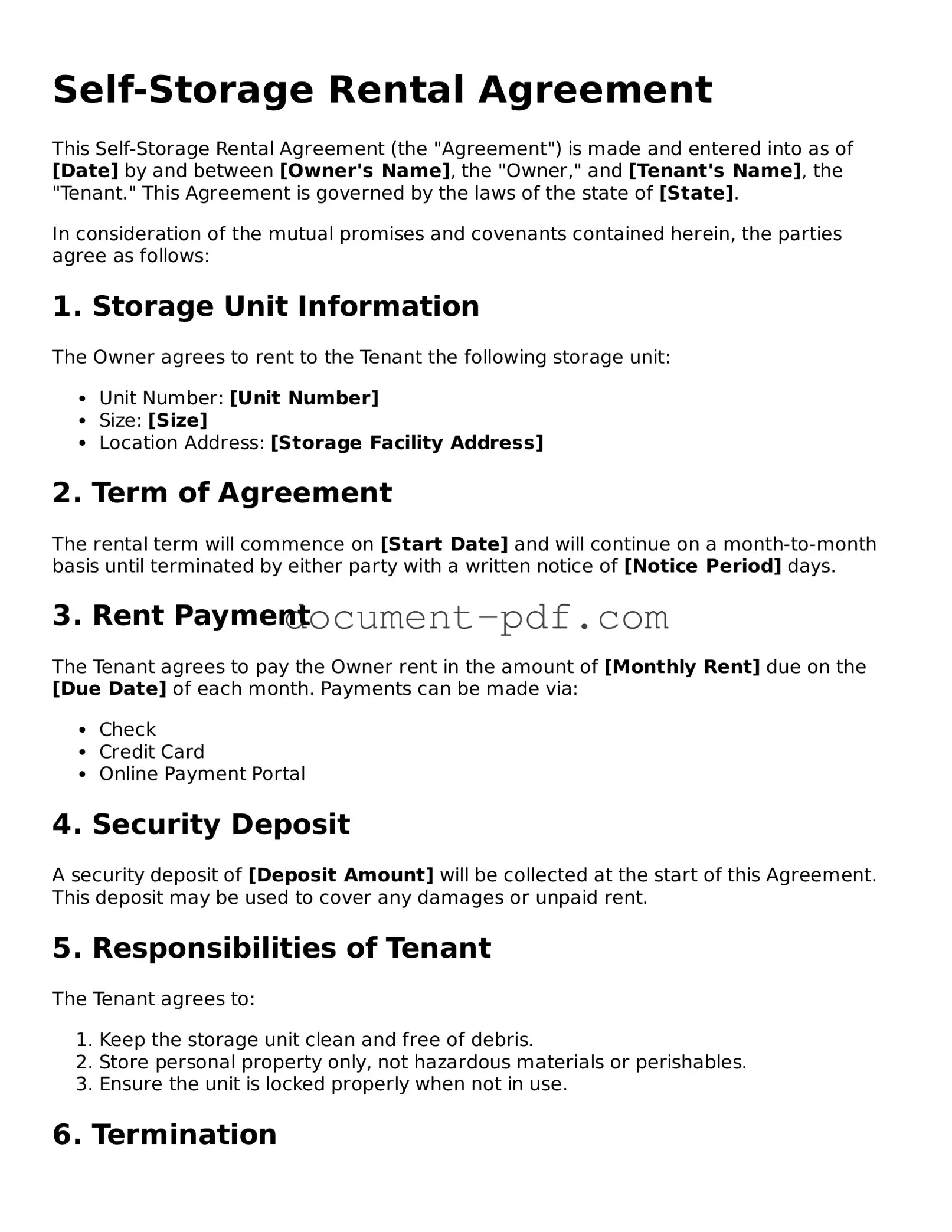Self-Storage Rental Agreement
This Self-Storage Rental Agreement (the "Agreement") is made and entered into as of [Date] by and between [Owner's Name], the "Owner," and [Tenant's Name], the "Tenant." This Agreement is governed by the laws of the state of [State].
In consideration of the mutual promises and covenants contained herein, the parties agree as follows:
1. Storage Unit Information
The Owner agrees to rent to the Tenant the following storage unit:
- Unit Number: [Unit Number]
- Size: [Size]
- Location Address: [Storage Facility Address]
2. Term of Agreement
The rental term will commence on [Start Date] and will continue on a month-to-month basis until terminated by either party with a written notice of [Notice Period] days.
3. Rent Payment
The Tenant agrees to pay the Owner rent in the amount of [Monthly Rent] due on the [Due Date] of each month. Payments can be made via:
- Check
- Credit Card
- Online Payment Portal
4. Security Deposit
A security deposit of [Deposit Amount] will be collected at the start of this Agreement. This deposit may be used to cover any damages or unpaid rent.
5. Responsibilities of Tenant
The Tenant agrees to:
- Keep the storage unit clean and free of debris.
- Store personal property only, not hazardous materials or perishables.
- Ensure the unit is locked properly when not in use.
6. Termination
Upon terminating this Agreement, the Tenant must remove all personal property from the storage unit and return the unit to the Owner in its original condition.
7. Governing Law
This Agreement shall be governed by the laws of the state of [State], without regard to its conflict of law principles.
8. Signatures
Both parties agree to the terms outlined herein and indicate such agreement by their signatures below:
___________________________ ___________________________
Owner's Signature Tenant's Signature
Date: _______________ Date: _______________
